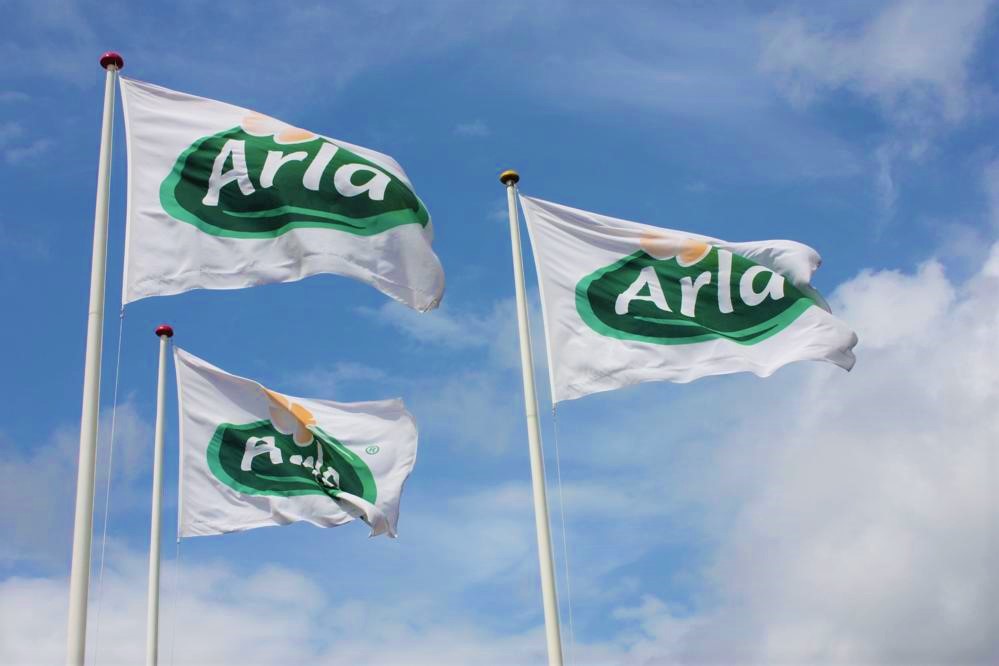International dairy co-op Arla Foods has announced plans to make 2020 a “record year” for investment, with plans to spend €619 million on major projects to increase production capacity.
It comes as the once-troubled co-op exceeded expectations for global branded sales whilst hitting the halfway mark to its €400 million Calcium cost-savings programme.
According to its latest accounts, during 2019 group revenue increased to €10.5 billion (compared to €10.4 billion in 2018 and €10.3 billion in 2017).
The boost was driven mainly by a 5.1% increase in branded sales year-on-year.
Arla’s performance price, a figure which measures the value Arla creates per kilo of milk, also continued to rise, reaching 36.6c compared to 36.4c in 2018.
Global revenues of the Arla brand grew to €3,033 million compared to €2,875 million in 2018, driven by a series of successful launches across its Lactofree and organic range, the introduction of new ‘flexitarian’ options, as well as the rapid growth of Skyr in core European markets.
Calcium cost-savings
Cost-savings plan Calcium continues to transform the business and deliver above expectations, with savings of €110 million exceeding the high-end 2019 target of €75-100 million.
As a result, the accumulated savings of €224 million since the launch in 2018, means that Arla is more than halfway towards the 2021 end goal of more than €400 million in sustainable savings.
Chief executive Peder Tuborgh said: “In 2019 we were able to grow and improve our quality of business while continuing to deliver efficiencies beyond our initial expectations.
“This clearly shows that our employees are transforming the way they work, spend and invest in our business.
“The changes are becoming more and more embedded in our ways of working and I am very proud of our people and our results so far.”
…and investment plans
2020 is expected to be another big investment year for the firm. Arla plans to invest a record €619 million in major projects to expand capacity in growth sectors.
The money will be spent:
- Continuing the completion of a powder tower in Pronsfeld, Germany to manufacture milk powder for the international markets.
- Expanding its mozzarella capacity in Branderup, Denmark;
- Upgrading its newly-acquired Bahrain production site;
- Increasing capacity for Arla Foods Ingredients.
However, the report warned Brexit continues to be a risk, with the negotiations on the future UK/EU trading relationship taking place in 2020.
It warned the potential for tariffs and non-tariff barriers would add friction and cost to its UK and EU trade.
The end of 2020 also marks the completion of the Good Growth 2020 strategic period, and Arla expects to reach all its long-term financial targets.
Group revenue outlook for 2020 is expected to be between €10.4 billion and €10.8 billion, with a net profit share in the range of 2.8 to 3.2%.
Key brands
Òf the firm’s brands, Lurpak’s performance was among the strongest, proving the resurgence in popularity of butter.
Innovations such as the Lurpak softest launch in the UK and the new butter box packaging for block butter helped the brand’s sales rise to €588 million, up from €561 million the year before.
The firm also saw strong brand performance overseas. Puck, the company’s leading brand in the Middle East and North Africa (MENA) also grew revenue to €363 million, compared to €352 million last year, driven by the processed and cream cheese business.
Milk-based beverage brands increased revenue by €20 million to €207 million, mainly driven by Starbucks, which is sold in Europe, Middle East and Africa.
Chief financial officer Natalie Knight said: “Arla’s global brands continue to be at the heart of our business and in 2019 we have clearly strengthened consumer trust in our brands.
“We delivered a range of popular dairy products that capitalized on increasing consumer demand for healthy and sustainable food choices, which helped us exceed our expectations for branded growth in 2019.”
Overall revenue in the Europe segment decreased by €154 million to €6,353 million, something the firm puts down to stepping out of unprofitable private label contracts and exchange rates.
International delivered overall double-digit branded volume revenue growth of 10.3% with growth across all regions except North America.

